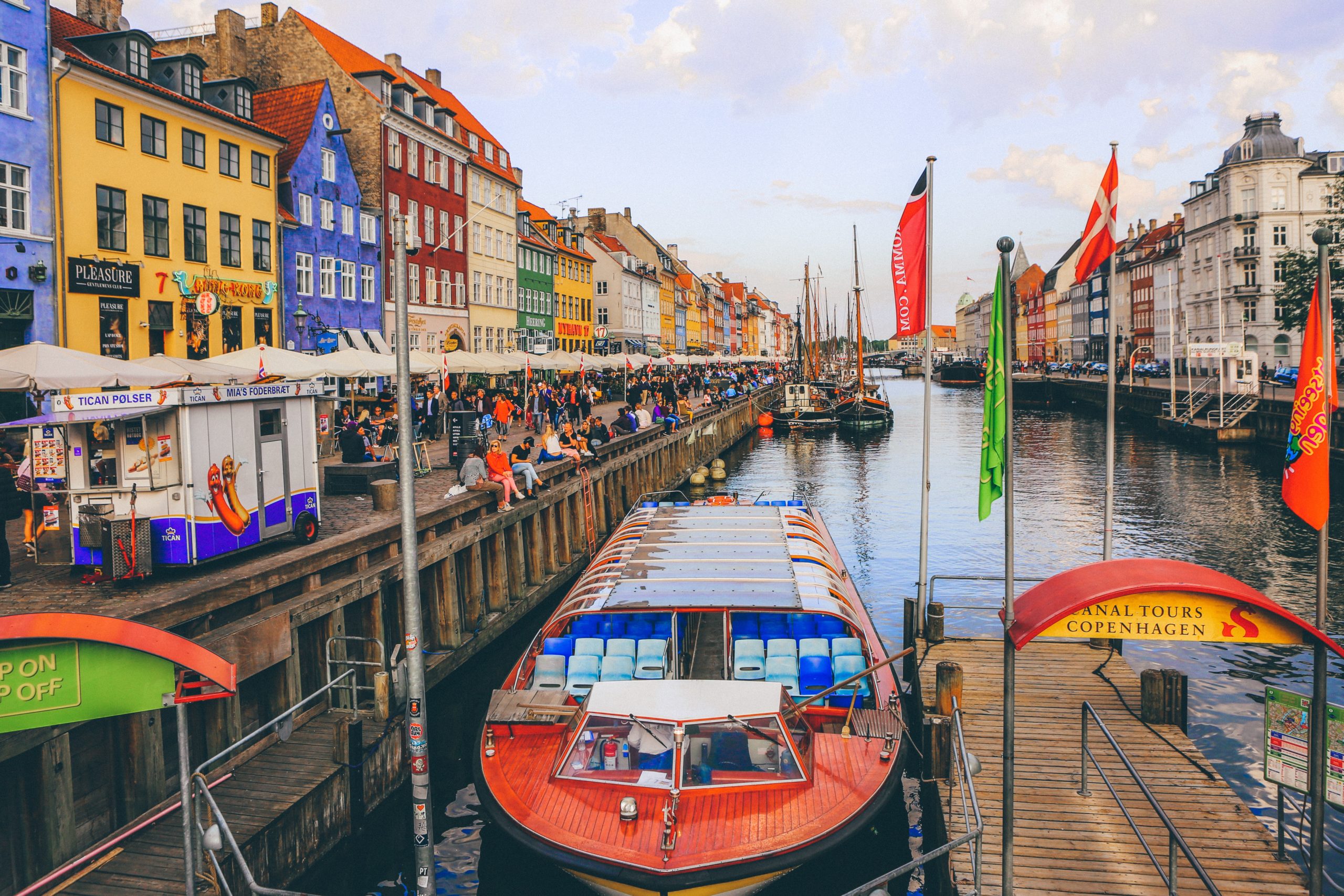Gaining citizenship of one Nordic country grants you rights in the others, such as making it easier to move there, work there, and even become a citizen. So, where is it easiest to become a citizen, and where will you be waiting the longest?

Denmark
Length of stay: 9 years
Normally, you must have lived in Denmark for nine consecutive years (without living elsewhere for more than three months) in order to qualify for Danish citizenship.
This period is reduced in some cases: for refugees it becomes eight years, citizens of Nordic countries need a two-year stay and people married to Danes qualify after 6-8 years, depending on the length of the marriage.
Other exceptions are made for those who have taken a significant portion of their education in Denmark, who may qualify after five years. If you moved to Denmark before your 15th birthday, you can become nationalised after you turn 18.
EU and non EU citizens must have a permit for permanent residency in Denmark for a minimum of two years before applying for citizenship.
Language test
Applicants must have passed the national Prøve i Dansk 3 language test, the final exam in the national Danish language school system. This involves a reading, writing, speaking and listening test which equates to B2 Danish.
There are certain exemptions from the language requirements. Residents of Greenland and the Faroe Islands, as well as Swedish and Norwegian speakers, do not need to document Danish proficiency. Dispensation can be given for applicants with certain types of illnesses and disabilities, and different rules apply to children.
Citizenship test
A condition of getting Danish citizenship is to demonstrate knowledge of Danish society, culture and history, by having passed a citizenship test (indfødsretsprøve).
In April 2021, the existing citizenship test, consisting of 40 multiple choice questions, was supplemented with five extra questions about “Danish values” such as equality, freedom of speech and the relation between legislation and religion.
The pass mark is 36/45 and at least four of the five Danish values questions must be answered correctly.
Children under 12, Swedish and Norwegian citizens, and people from the Danish minority in German region Schleswig-Holstein do not need to take the citizenship test.
Other requirements
- Sign a declaration pledging allegiance and loyalty to Denmark and Danish society and promising to abide by its laws.
- Be free of debt to the public sector and be financially self-sufficient.
- Have no criminal convictions.
- Hold a full-time job or been self-employed for three and a half of the last four years.
- Attend a ceremony, declare you will uphold Denmark’s laws, values and principles and shake hands with an official.
You also need to submit paperwork to prove your identity, current nationality, residency and economic activity in Denmark.
Processing time and fees
At the end of 2021, the processing time for applications was approximately 14 months, according to the immigration ministry. The fee is 4,000 Danish kroner (~€537).
After this time, you receive a letter notifying you that you can expect to be accepted for citizenship at the next round of parliamentary procedure (which happens twice yearly), provided you still fulfil the requirements at that time.
Once the new law making you a citizen comes into force, you will be sent a declaration that you have been accepted for citizenship with one final condition: you attend a ceremony, declare that you will uphold Denmark’s laws, values and principles, shake hands with an official and become a citizen.
- READ MORE: How to apply for citizenship in Denmark

Sweden
Length of stay: 2-5 years
EU and non EU citizens can apply for Swedish citizenship after living in Sweden for five continuous years with right of residence.
In some cases, this period can be even shorter.
Nordic citizens who have lived in Sweden for at least five years can become Swedish citizens through notification. This involves filling out a form and sending it to the local country administrative board, with a fee of 475 kronor.
The alternative is to submit an application for citizenship to the Migration Agency, which Nordic citizens can do after living in Sweden for two years. No other requirements below are needed for Nordic citizens.
EU and non-EU citizens who have lived with a Swedish citizen for at least two years can apply for citizenship earlier, after three continuous years in Sweden. However applicants will be asked to show that they have adapted well to Swedish life. This could be shown through learning the language, proving you can support yourself, or through the length of your marriage.
The requirement for continuous residency in Sweden means that if you spend more than six weeks abroad in any given year, it will extend the period of time until you can apply for citizenship.
For non-EU citizens, the process for getting citizenship is just the same as for EU citizens, except there is an additional requirement for a permanent residence permit. Permanent residency for non EU citizens is usually granted after four years of living in Sweden.
Other requirements: No outstanding debts or recent crimes
In addition to length of stay, EU and non EU citizens must have “conducted themselves well in Sweden”, and the Migration Agency will request information on whether you have debts or have committed crimes in the country.
An application can be rejected if a person has unpaid taxes, fines, or other charges. Debts to private companies passed on to the Swedish Enforcement Authority could also impact the application, even if they are paid, as two years must pass after payment to prove you’re debt-free. If you’ve committed a crime, there’s also a qualifying period before citizenship can be granted which depends on the sentence.
An automated test (in Swedish) can be filled in here to see if you meet those requirements.
Language and citizenship test: May soon be required
While Swedish language skills and knowledge of Swedish society are not currently a requirement for citizenship, this could change in the future. In January 2021, the Swedish Ministry of Justice and Migration put forward proposals to introduce an A2 language exam for would-be Swedes, with exceptions for vulnerable individuals who have made a reasonable effort to learn the language. There are also proposals for a knowledge test about Swedish society.
These proposals will be subject to a long political process before they can be put into law, so at present the requirements are proof of identity, duration of residency in Sweden, and no record of serious criminal offences or debts.
Processing time and fees
The Migration Agency says applicants should expect an average of 39 months between submitting their application and becoming Swedish. Readers of The Local have reported the process taking anywhere between a couple of weeks to over three years. The application costs 1,500 SEK (~€150).

Norway
Length of stay: 6-8 years
EU and non EU citizens can apply for Norwegian citizenship after living in Norway for eight years out of the past eleven years and if they have held residence permits that were each valid for at least one year during that time.
A new rule, which came into effect in January 2022, means that if you have sufficient income, you can apply after six years rather than eight. Currently sufficient income is 319,997 kroner (~€30,520), but this can change annually.
Those with Norwegian spouses, registered partners, or cohabitants can apply after living in Norway for three of the last ten years.
Nordic citizens over the age of 12 can apply for Norwegian citizenship after two years living in Norway and do not need to fulfil any further requirements below.
Language test
EU and non EU citizens have to pass an oral Norwegian language test at either A2 or B1 level. A2 refers to an elementary level of Norwegian, and B1 is considered semi-fluent.
The change to the language requirement from A2 to B1 will apply from autumn 2022 at the earliest, according to the UDI.
Citizenship test
Applicants must pass a citizenship test (statsborgerprøve), or a social studies test if aged between 18 and 67. The tests must be taken in Norwegian, either Bokmål or Nynorsk.
For the citizenship test, applicants need to answer at least 24 of 36 multiple choice questions correctly to pass. Topics included in the test are history, geography, democracy, welfare, education, health and working life in Norway.
Other requirements
After filling in an online application, applicants have to deliver a series of documents in person, including birth certificates, marriage certificates (if applicable), a full list of entries into and departures from Norway, at least seven years of tax returns, and a police report certifying “good conduct”.
Processing time and fees
It costs 6,500 kroner to apply if you are over 18. However, the fee is cheaper or completely waived if you are a Nordic citizen, previously held Norwegian citizenship, or are under 18 years of age.
Applications take around 16 months to process but this can vary.
READ MORE: EXPLAINED: How to apply for Norwegian citizenship
Roundup
Even if Sweden decides to include a language and citizenship test in their application process, the country will remain the easiest and cheapest in Scandinavia in which to become a citizen, although there’s a downside – it also has the longest processing time for citizenship applications.
Here’s the roundup.
Swedish citizenship
Application Fee: ~€150 (1,500 Swedish kronor)
Length of time living in country: 3-5 years
Language level needed: None, but this may change
Citizenship test: None, but this may change
Other requirements: No record of serious criminal offences or debts
Dual nationality allowed: Yes
Processing time: Around 39 months
Norwegian Citizenship
Application Fee: ~€250 (2,500 Norwegian kroner)
Length of time living in country: 6-8 of the past 11 years
Language level needed: A2 Norwegian, soon to change to the more difficult B1 Norwegian
Citizenship test: Yes
Other requirements: A full list of entries into and departures from Norway, at least seven years of tax returns, and a police report certifying “good conduct”.
Dual nationality allowed: Yes thanks to a law change in 2020
Processing time: Around 16 months
Danish citizenship
Application Fee: ~€537 (4,000 Danish kroner)
Length of time living in country: 9 years
Language level needed: B2 Danish
Citizenship test: Yes
Other requirements: No record of serious criminal offences or debts and be financially self-sufficient; sign a declaration pledging allegiance and loyalty to Denmark and its laws; hold a full-time job or been self-employed for three and a half of the last four years; attend a ceremony.
Dual nationality allowed: Yes
Processing time: 14 months – 2 years



 Please whitelist us to continue reading.
Please whitelist us to continue reading.
Member comments